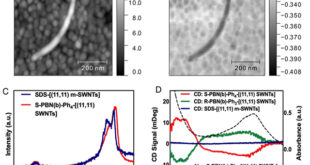European Polymer Journal, Volume 49, Issue 12, December 2013, Pages 4141-4148.
Klaus Bretterbauer, Claudia Holzmann, Egon Rubatscher, Clemens Schwarzinger, Albert Roessler, Christian Paulik.
Institute for Chemical Technology of Organic Materials, Johannes Kepler University Linz, Altenberger Strasse 69, 4040 Linz, Austria and
ADLER-Werk Lackfabrik, Johann Berghofer GmbH & Co KG, Bergwerkstrasse 22, 6130 Schwaz, Austria.
Abstract
The synthesis and characterization of N1,N2,N3-trimethylmelamine based (meth)acrylates and their application as components of UV-curable lacquers is described. A pre-condensed oligomeric mixture with a degree of condensation up to five is obtained via a one-pot conversion. Dividing the synthesis into two steps gives access to the mostly monomeric tris(meth)acrylates in overall yields higher than 76%. In general, the prepared compounds can easily be applied on glass, metal, and polystyrene glass affording highly transparent, hard, and scratch resistant coatings after UV-curing. The UV-cured monomeric trimethylmelamine trisacrylate was fully characterized by means of hardness, gloss, scratch-, abrasion-, and chemical resistance. Remarkably, the trimethylmelamine trisacrylate does not release cancerogen formaldehyde even at 150 °C.
 Advances in Engineering Advances in Engineering features breaking research judged by Advances in Engineering advisory team to be of key importance in the Engineering field. Papers are selected from over 10,000 published each week from most peer reviewed journals.
Advances in Engineering Advances in Engineering features breaking research judged by Advances in Engineering advisory team to be of key importance in the Engineering field. Papers are selected from over 10,000 published each week from most peer reviewed journals.


